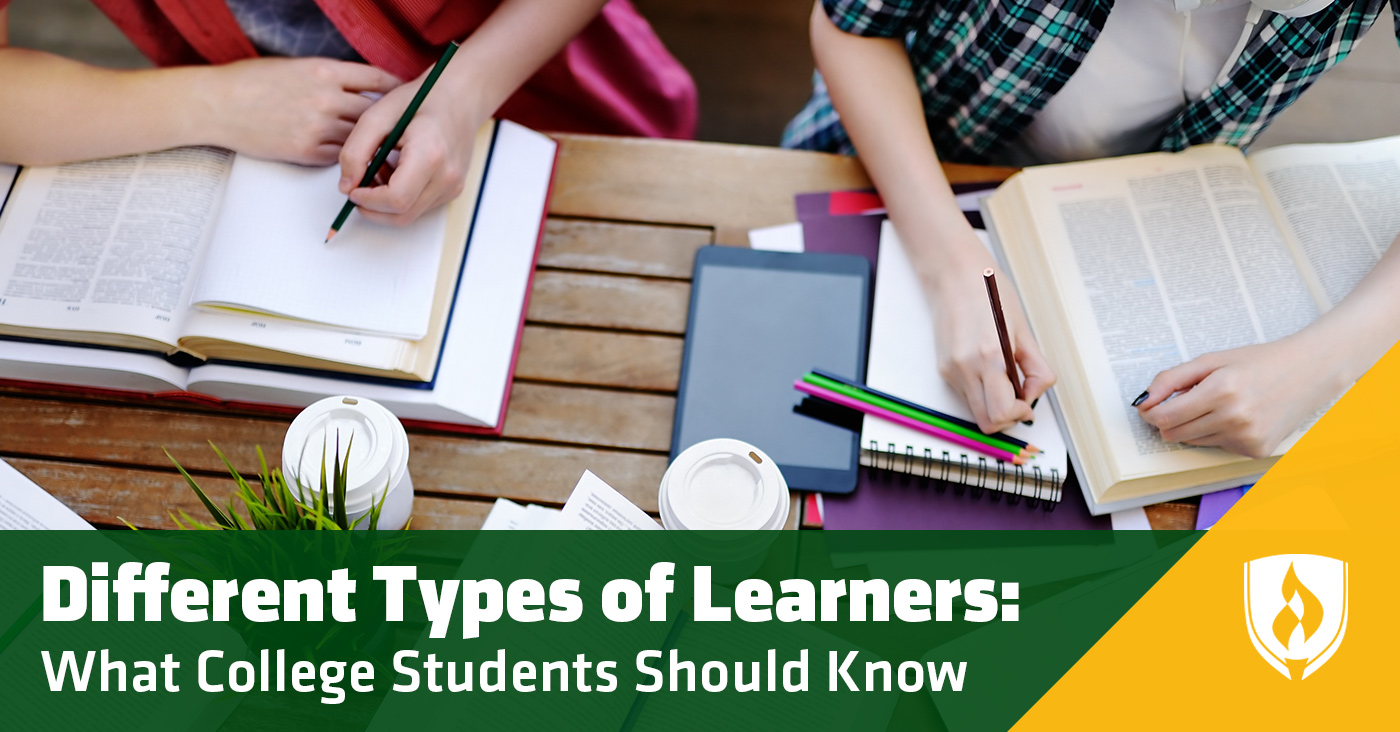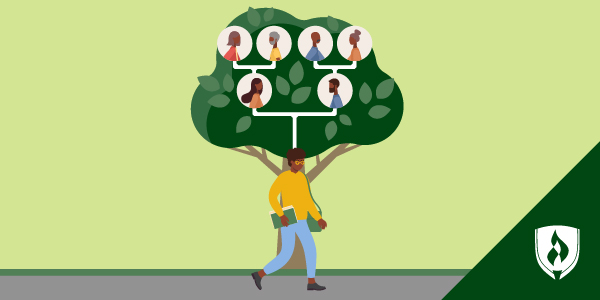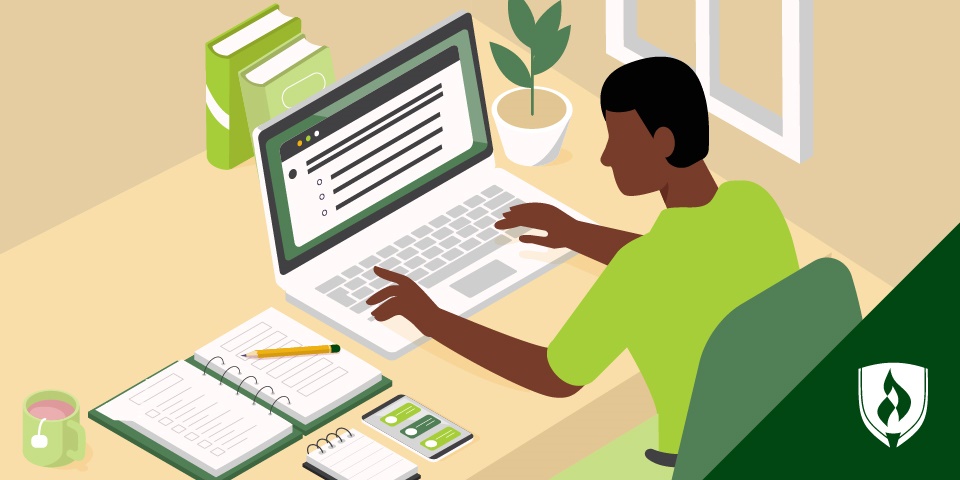
There’s no one size fits all when it comes to how you comprehend information. Everyone is different—but for many years, students have been asking questions about their learning style.
The concept of learning styles has had a huge impact on education in general. According to the Association for Psychological Science (APS), educators and students alike have been hearing for over 30 years that most people are either visual or auditory learners.1 But this concept, while fascinating to many people, tends to lead to conclusions that aren’t always backed by research.
“We’re more similar in learning than we are different in styles,” says author and learning specialist Dr. Barbara Hong. “For example, if you want to teach someone the location of Singapore, the best way to show them is a map. Not because they are visual learners but because that’s the best way to teach it.”
Hong explains that no matter what kind of student you are, you are more likely to understand the taste of salt by actually tasting it than by going through lectures, visual presentations or anything else. In this way, learning different subjects can call for a wide variety of methods.
When it comes to navigating your way through education, you might find that you prefer certain ways of understanding information. You may already know, for example, that you retain more information when you study alone. Or that you understand a scientific process faster when you walk through the steps with a friend.
When you start to ask yourself how you learn best—little insights like this can help you thrive in your education. Read ahead to learn how you can utilize different learning styles to maximize your academic experience.
What are learning styles?
“We should start by addressing something important: Learning styles, as we often think about them, don’t necessarily exist,” says William Haynes, educator and recruiting regional manager for the Princeton Review. Haynes explains that many studies have tested and researched the concept that students learn differently than others, without finding grounds for the belief.2
“We are generally taught to believe that our learning styles are either visual, audible, or kinesthetic,” Haynes says. “But studies have found that students who thought they were visual learners, for example, didn’t necessarily do better when presented with more visual material.”
Even when it comes to study habits, Haynes has found that students don’t necessarily improve when they tailor their study sessions to match the learning style they believe they have. “That being said, the idea of learning styles is prominent in our culture. Maybe we could call them learning preferences or learning familiarity ...”
“Even if learning styles as we know them don’t exist, it is still very important to consider what we prefer, what we think works, etc. …” Haynes says. “I think there might be plenty of anecdotal evidence that supports learning styles.” As a teacher, Haynes saw that offering material in a variety of formats engaged more students and yielded better results. “Engaging more senses and even the mere repetition certainly makes a difference.”
Hong suggests that common devices used to teach certain subjects, such as visuals in geography and geometry or rhythm and music in memorization are indications of how most people will learn those specific subjects best.
In this way, learning styles can still have a real impact on your experience as a student. Consider learning songs in school to memorize material—going all the way back to the ABCs. If staring at a list of important historical dates is getting you nowhere, you might attempt making them into a song. Teachers won’t always offer melodies for material you need to memorize, but if you’ve given thought to what works for you, you can study that way.
What are the different types of learners?
As mentioned above, for a long time people have been sorted into certain categories of learning.
The main categories our experts mentioned were:
- Visual learners
- Auditory (or aural) learners
- Kinesthetic (or hands-on) learners
- Reading and writing learners
Visual learners
Visual learners absorb information best when they can visualize relationships and ideas. Maps, charts, diagrams and even essays work well for visual learners. When instructors illustrate or diagram their lectures on a whiteboard, visual learners may find they remember the information much better.
Haynes finds that visuals are pretty essential for all students when it comes to subjects like geometry. “I suggest that it’s a more visual approach, but it’s really more of a way to avoid making mistakes. I instruct students to always draw the shapes if they aren’t presented, fill in the pieces, etc.”
Auditory learners
Auditory learners are all ears. They tend to prefer listening to information rather than reading it or seeing it visually displayed. Auditory learners may speak and read slowly. They tend to be linear thinkers and may repeat things they hear out loud. When it comes to studying, an auditory learner might remember material best if they talk about it with someone else, since it will be easier to recall a conversation than a visual image of words on a page.
Kinesthetic learners
Kinesthetic learners are the most hands-on learning type. They learn best by doing and may get fidgety if forced to sit for long periods of time. Kinesthetic learners do best when they can participate in activities or solve problems in a hands-on manner. Sometimes even being physically engaged (tossing a ball, knitting) will help them retain information better. They tend to remember what they do best.
Reading & writing learners
Reading and writing learners are extremely comfortable with the written word. They prefer to consume information by reading texts and can further absorb information by condensing and rephrasing it. The traditional college textbook and annotation process works well for the reading/writing learning style.
Getting the most out of different types of learning
You won’t always be able to influence how material is taught to you in college. But if you look back over how you have learned best in the past, you can make informed choices about the kind of program you choose to enroll in.
“If you learn through reading, you may benefit from online classes with study guides and textbooks,” says Elizabeth Malson, president of the Amslee Institute. “Visual learners prefer live lectures and demonstrations or on-demand videos.” Knowing how you like to learn can help you pick the right post-secondary program.
But our experts caution against trying to make your whole education fit into one learning style.
For example, Haynes says a subject like grammar can be dangerous if students rely on auditory learning. Grammar in common usage is not always correct. If students use their ears to detect grammatical errors, they will likely make mistakes on a test. “In this case, they need to ‘turn off’ that style and stick to knowing the rules as they are tested.”
So instead of boxing yourself into one learning style, think of all the different tactics you could try in your education. Recommended study habits for people who prefer visual, auditory, kinesthetic and reading/writing methods can all be super useful for the right subject.
- Study for tests with flashcards.
- Make lists or flowcharts.
- Join a study group to discuss ideas with other students.
- Record lectures to listen to later.
- Make a song to memorize something.
- Print out presentation slides to review.
- Rewrite ideas in your own words.
- Translate visual information into statements.
- Read printed information out loud to yourself.
- Walk around while reviewing your notes.
- Trace words with your fingers as you study.
- Verbally review material with someone while bouncing a basketball.
Experiment with any of the above techniques that appeal to you, and you just might revolutionize your study habits. “We often have bad or semi-bad habits that have worked well enough in the past,” Haynes says. “Even if they aren’t the best. Look for how you can improve, and use techniques from all of the styles as appropriate depending on the class, topic, subject, etc. …”
Malson points out that understanding how you study best can also influence your program choice at the onset. Students who prefer to work in concentrated chunks will like moving faster in online programs where they may be able to complete requirements ahead of schedule. Students who learn from others will want to look for in-person classroom environments where they can join a study group.
What kind of learner are you?
Most students will have to find ways to adapt in the course of their education. Some subjects will present more of a challenge, and some teachers will employ learning aides that don’t do much for you. But if you are the kind of learner who takes initiative, you will be poised to thrive in your education.
Now you have a better idea of some of the learning and study tactics that can help you personalize your education. But that’s not the end of the choices available—you have more control of your learning environment than you might think!
Check out our article “Ways of Learning in College: Identify Your Ideal Educational Environment” to see what we mean.
1Association for Psychological Science, Learning Styles Debunked: There is No Evidence Supporting Auditory and Visual Learning, Psychologists Say [accessed March 2019] https://www.psychologicalscience.org/news/releases/learning-styles-debunked-there-is-no-evidence-supporting-auditory-and-visual-learning-psychologists-say.html
2Husmann, Polly R. and O’Laughlin, Valerie, Indiana University School of Medicine, Another Nail in the Coffin for Learning Styles? Disparities among Undergraduate Anatomy Students’ Study Strategies, Class Performance, and Reported VARK Learning Styles [accessed March 2019] https://onlinelibrary.wiley.com/doi/epdf/10.1002/ase.1777
EDITOR’S NOTE: This article was originally published in 2016. It has since been updated to include information relevant to 2019.




